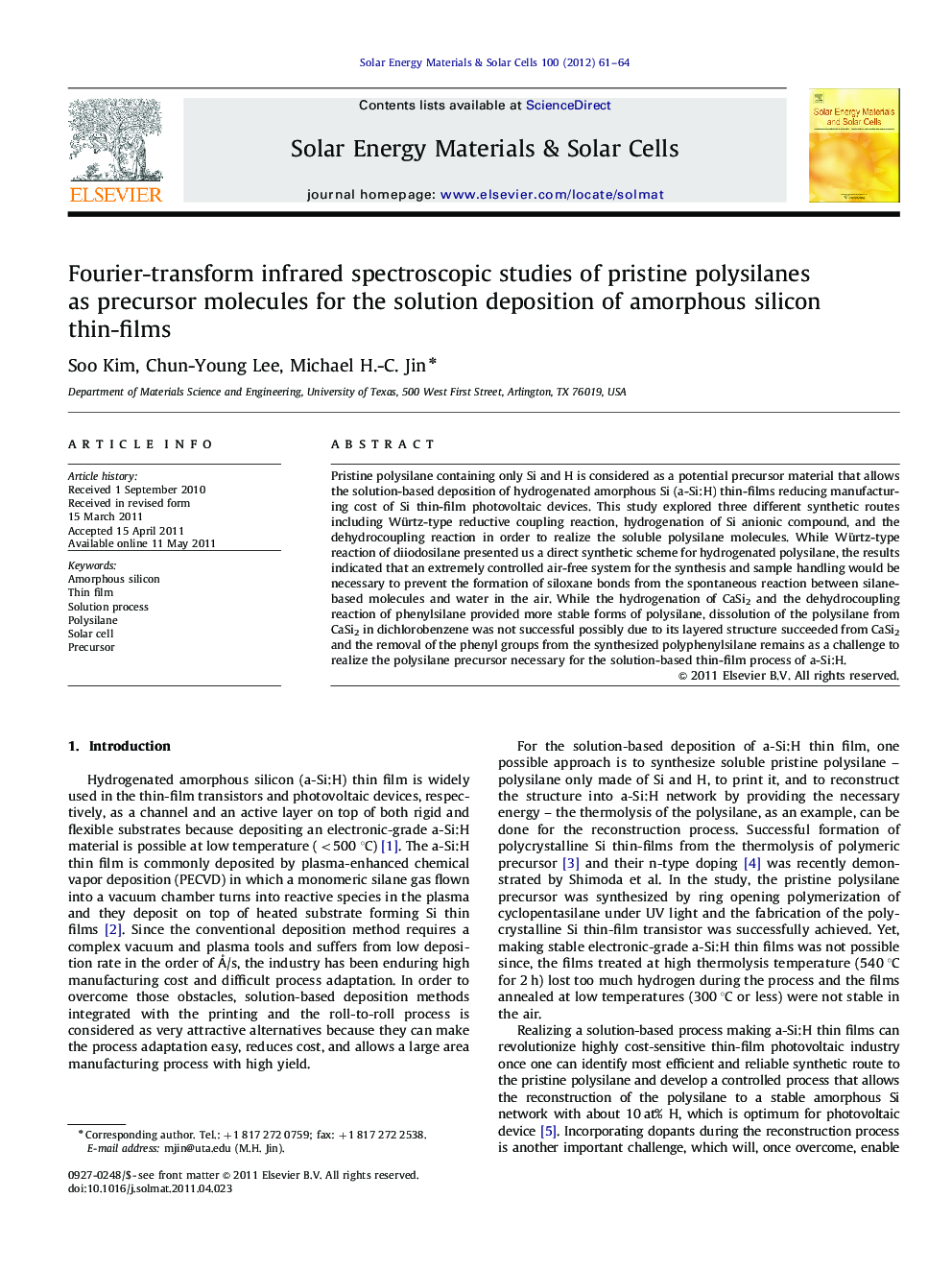| کد مقاله | کد نشریه | سال انتشار | مقاله انگلیسی | نسخه تمام متن |
|---|---|---|---|---|
| 78377 | 49330 | 2012 | 4 صفحه PDF | دانلود رایگان |

Pristine polysilane containing only Si and H is considered as a potential precursor material that allows the solution-based deposition of hydrogenated amorphous Si (a-Si:H) thin-films reducing manufacturing cost of Si thin-film photovoltaic devices. This study explored three different synthetic routes including Würtz-type reductive coupling reaction, hydrogenation of Si anionic compound, and the dehydrocoupling reaction in order to realize the soluble polysilane molecules. While Würtz-type reaction of diiodosilane presented us a direct synthetic scheme for hydrogenated polysilane, the results indicated that an extremely controlled air-free system for the synthesis and sample handling would be necessary to prevent the formation of siloxane bonds from the spontaneous reaction between silane-based molecules and water in the air. While the hydrogenation of CaSi2 and the dehydrocoupling reaction of phenylsilane provided more stable forms of polysilane, dissolution of the polysilane from CaSi2 in dichlorobenzene was not successful possibly due to its layered structure succeeded from CaSi2 and the removal of the phenyl groups from the synthesized polyphenylsilane remains as a challenge to realize the polysilane precursor necessary for the solution-based thin-film process of a-Si:H.
Graphical AbstractFigure optionsDownload as PowerPoint slideHighlights
► Polysilanes are synthesized as precursors for amorphous Si thin film deposition.
► Würtz-type, hydrogenation of CaSi2, and dehydrocoupling reactions are used.
► Oxidation, solubility, and dephenylation are the major obstacles.
Journal: Solar Energy Materials and Solar Cells - Volume 100, May 2012, Pages 61–64